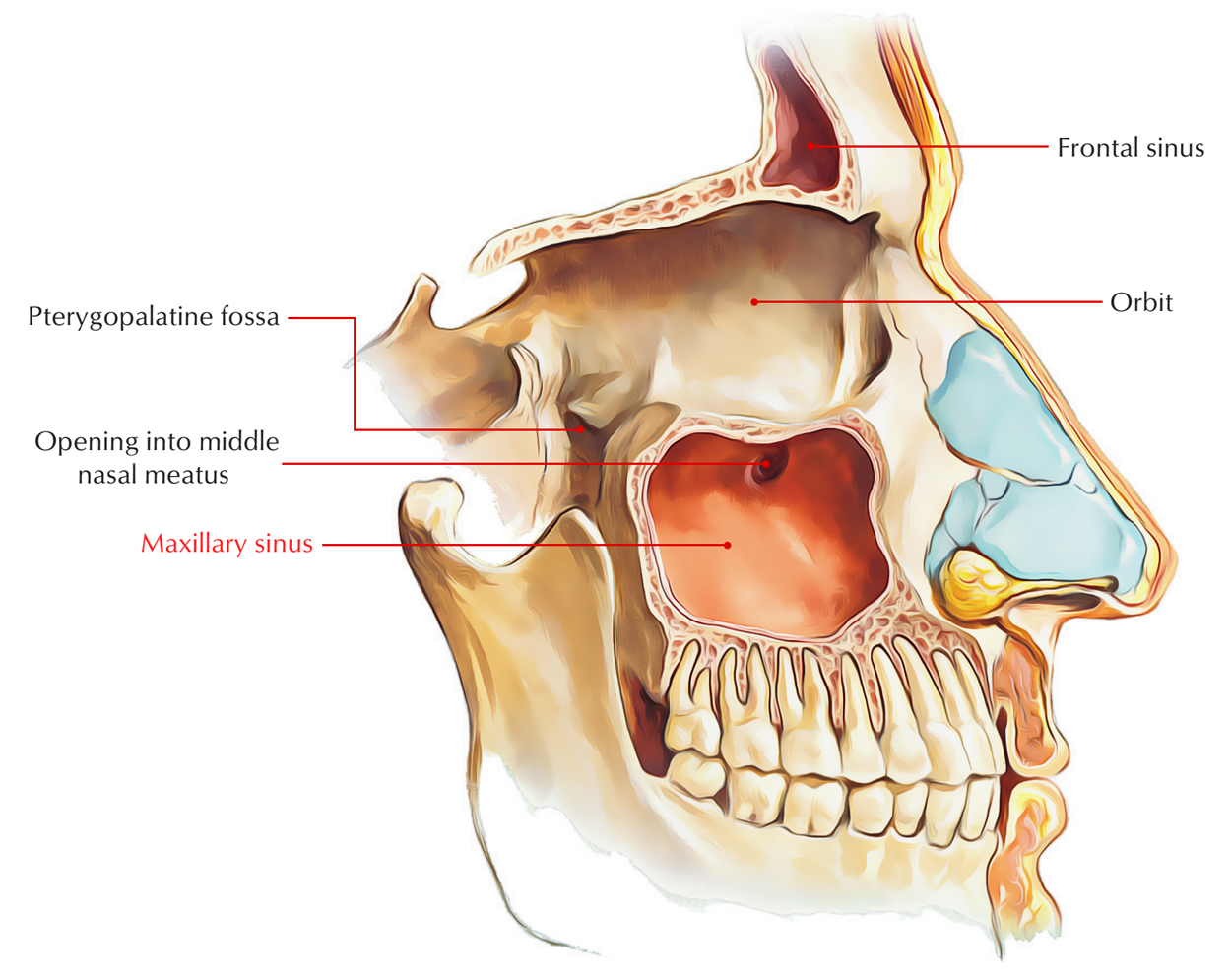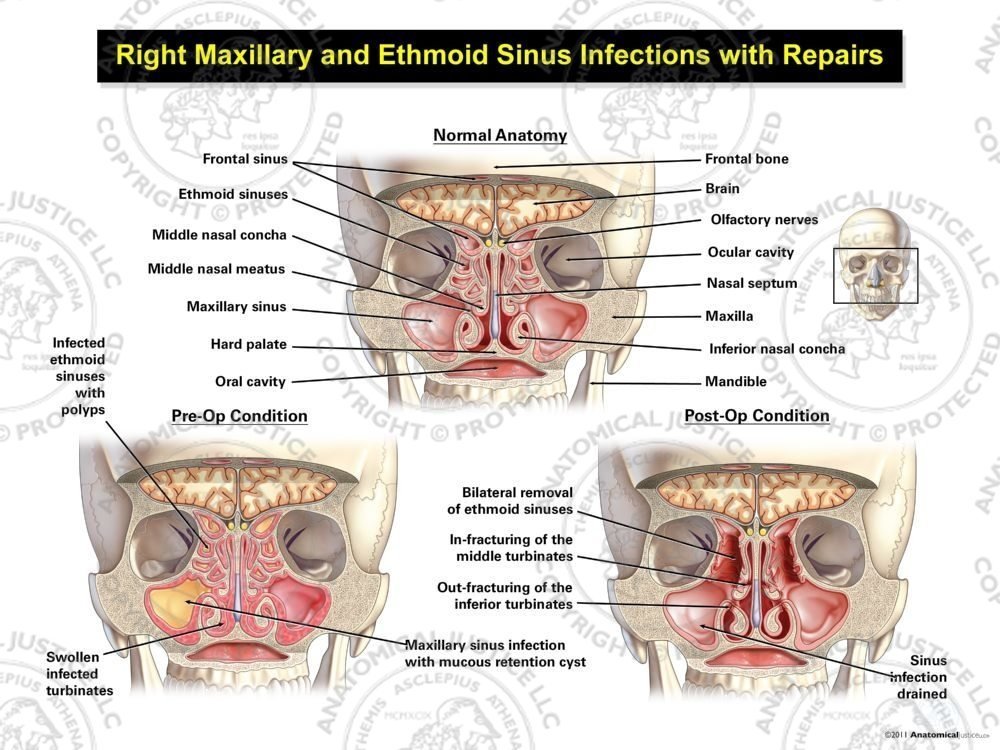Acute sinusitis symptoms often include: thick, yellow or greenish discharge from the nose or down the back of the throat (postnasal drainage) nasal blockage or congestion, causing difficulty breathing through your nose pain, tenderness, swelling and pressure around your eyes, cheeks, nose or forehead that worsens when bending over. The pyramid-shaped maxillary sinus (or antrum of highmore) is the largest of the paranasal sinuses, and drains into the middle meatus of the nose through the . Maxillary sinusitis is inflammation of the maxillary sinuses. the symptoms of sinusitis are headache, usually near the involved sinus, and foul-smelling nasal or pharyngeal discharge, possibly with some systemic signs of infection such as fever and weakness.
Maxillary Sinus The Usual Entry Point Of Infection
Maxillary sinusitis is common and the dentist needs to be able to distinguish it from dental disease. it is usually an acute condition, but chronic sinusitis may also develop following an acute episode and may persist or recur if drainage from the antrum to the nasal cavity is poor or when a foreign body is retained. Find instant quality results now! get medicine for sinusitis. Acute sinusitis symptoms often include: 1. thick, yellow or greenish discharge from the nose or down the back of the throat (postnasal drainage) 2. nasal blockage or congestion, causing difficulty breathing through your nose tiga. pain, tenderness, swelling and pressure around your eyes, cheeks, nose or forehead that worsens when bending over other signs and symptoms include: 1. ear pressure 2. headache 3. aching in your teeth 4. altered sense of smell 5. cough 6. bad breath 7. fatigue 8. fever.

Maxillary Sinus Wikipedia
Acute sinusitis radiology reference article radiopaedia. org.
Maxillary Sinus The Definitive Guide Biology Dictionary
Maxilla sinusitis an overview sciencedirect topics.
Feb 25, 2021 · the maxillary sinus is often involved in cases of sinusitis because it can be especially prone to inflammation as a result of the way in which it is structured. the largest part of the paranasal sinuses is the maxillary sinus. Maxillary sinus, now commonly called the anfig. 1. -maxillary antrum as illustrated by highmore the maxillary sinus is extremely variable ranging from lima to . Ct-verified unilateral maxillary sinusitis is a common medical condition both in primary care and in ear-nose and throat (ent) specialist care. dental maxillary sinusitis s diseases .
What Is Maxillary Sinusitis With Pictures


See full list on hay-fever-relief. com. Acute sinusitis causes the spaces inside your nose (sinuses) to become inflamed and swollen. this interferes with drainage and causes maxillary sinusitis s mucus to build up. with acute sinusitis, it might be difficult to breathe through your nose. the area around your eyes and face might feel swollen, and you might have throbbing facial pain or a headache. acute sinusitis is mostly caused by the common cold. unless a bacterial infection develops, most cases resolve within a week to 10 days and home remedies may be all that's needed to treat acute sinusitis. sinusitis that lasts more than 12 weeks despite medical treatment is called chronic sinusitis. That affect one or more adjacent sinuses (guiliand &. laurent, 2005). the maxillary sinus belonging to the nasal and oral cavity is the most susceptible of the all. See full list on mayoclinic. org.
It is important to seek medical attention if maxillary sinusitis s your symptoms of maxillary sinusitis last more than a few days. more serious complications could occur if left untreated. if you have been taking medication and you do not feel yourself getting better, make sure to follow up with your doctor. it is sometimes necessary to have a surgical procedure, though is it not common. Chronic maxillary sinusitis rarely causes facial pain except in acute exacerbations. acute maxillary sinusitis rarely causes facial swelling. antibiotics are only indicated in acute maxillary. Treatment of maxillary sinusitis should primarily consist of restoring the normal milieu within the sinus by antral puncture and lavage. penicillin v is still the first antibiotic drug of choice, because of its effectiveness in vitro and in vivo. in therapeutic failure, aeration of the maxillary sinus is first recommended.

The maxillary sinus is often involved in cases of sinusitis because it can be especially prone to inflammation as a result of the way in which it is structured. the largest part of the paranasal sinuses maxillary sinusitis s is the maxillary sinus. Chronic sinusitis is defined clinically as a sinonasal infection lasting more than maxillary sinus, anterior ethmoid air cells, and frontal sinuses are affected due .
Acute sinusitis is most maxillary sinusitis s often caused by the common cold, which is a viral infection. in some cases, a bacterial infection develops. Although it was surely a pretty picture, maxillary sinusitis is not. the maxillary sinuses are located behind your cheek bones and are amongst the largest of your paranasal sinuses. it is also the most common place for your to develop a sinus infection. Maxillary sinusitis is a condition where the maxillary sinuses become inflamed. maxillary sinusitis can be caused by either a virus bacteria or fungus, though acute sinusitis is most commonly caused by a bacterial infection, namely after a viral upper respiratory tract infection. 18 jun 2020 objectives the aim of this study is 1) to obtain the area and volumes of the maxillary sinuses in patients affected by clinically unilateral sinus .
The ethmoidal sinuses are located between your eyes. the maxillary sinuses are located below your eyes. the sphenoidal sinuses are located behind your eyes. the frontal sinuses are located above your eyes. the biggest sinus cavity is the maxillary cavity, and it is one of the cavities that most often becomes infected. Sinusitis is a common condition defined as inflammation of the paranasal sinuses. sinus cavities produce the mucus that nasal .
Posting Komentar untuk "Maxillary Sinusitis S"